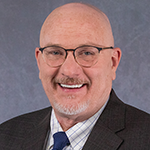Protect your organisation from a Non-Owned Liability Claim

 By: James Winegardner – President, CEO – Adventist Risk Management, Inc. (USA)
By: James Winegardner – President, CEO – Adventist Risk Management, Inc. (USA)
The largest claim ever paid through Adventist Risk Management, Inc. (ARM) is for liability claims generated by an organization we did not own. Further, this organization was not part of the denominational structure or even mentioned in the Seventh-day Adventist Yearbook. This claim is ongoing, and before conclusion it may cost the church well over $50 million.
Do you have a similar potential loss looming at your organization? What could your organization do to prevent these claims?
There are many ways that things can come under our liability structure. Recently, in one field, member volunteers began a rural healthcare ministry that became a senior care center. They had no state licensure for the practice and no qualified caregivers. Eventually, the local pastor joined in and ran the facility. Can you imagine the kinds of liabilities this practice could create for the church?
Another example is a local member who started a media ministry in which he preaches the “real truths.” He is broadcasting/streaming/podcasting from the church campus, including messages that reference the evils of Roman Catholics and degrade the personal autonomy of women. Are there potential liabilities apparent?
In this article, I seek to build awareness of the ways we unnecessarily incorporate other organizations or ministries into our liability structure, placing us at risk. I will break down the anatomy of non-owned liability incidents, drawing attention to three elements that make these claims foreseeable. I will also conclude each element with precautions your ministry can take to prevent a non-owned liability claim from drawing precious funds from your organization.
A non-owned liability incident is foreseeable when the following elements are present:
1. An organization or ministry is not accountable or controlled by the local church and the conference.
A supporting ministry is one of the common ways that a non-owned liability incident may develop, because the ministry is not actively accountable to the rules and regulations of a local church and its respective conference. One of the most common fields where a supporting ministry may operate is education, particularly self-supporting schools.
It is important to note that the Seventh-day Adventist Church has been in the school business for a long time and has developed generations of professional educators and administrators who produce excellent results. In North America, no other evangelistic enterprise produces even a significant fraction of the baptisms that our schools generate.
However, this excellence comes with a cost. Our schools are expensive because of the management, oversight, and professional workforce driving the evangelistic, educational ministry. For this reason, many who have revolutionary ideas for education seek to implement those ideas outside the Adventist Church system. Much good can come from this kind of ministry, but also much liability.
Many types of ministries, including evangelistic, media, and health-based, seek to further God’s work outside the official structure of the Seventh-day Adventist Church. We can love and support these ministries. However, we cannot manage or control these ministries. These prohibitions exist because we cannot be responsible for self-supporting schools or other supporting ministries.
The supporting ministries must therefore operate and be controlled according to their system of governance and their legal structure. They must be responsible for themselves, and Adventist entities and employees must never create the impression that the Adventist Church either operates or controls a supporting ministry.
2. Organizations or personnel of the organized church become integrated with the supporting ministry.
This can happen in either intentional or organic, unintentional ways. Lack of foresight in this area can become a significant source of trouble. We and our members have a deep affection for many supporting ministries. Our members operate these enterprises, so we try to support them. We accept invitations to sit on their boards. Sometimes the supporting ministry may adopt an entire church board or conference committee as their board. We write letters of recommendation for their ministry in our official capacity or on our official letterhead. Our boards or committees take actions to show our support of the ministry. Our leaders express support on personal social media platforms. Church employees take roles within the supporting ministry, including running the enterprise itself. Our churches and other institutions collect offerings for the supporting ministry without clarity on its ownership and governance.
Usually, no single one of those items would put you into a liability zone. However, one of them, done visibly, might. For instance, asking for an offering for a supporting ministry may not make the ministry appear to be ours; however, if you put them on your tithe envelope right next to church budget, as something you expect people to give to every week or every month, that might be enough to make it appear that it’s a ministry of the church. It is important to draw clear boundaries between your ministry and the supporting ministries you may indirectly be involved with.
3. Ministries are operated without proper leadership.
The Seventh-day Adventist Church is a mature organization. Its policies and practices are engaged by a professional workforce of employees and volunteers supported by the World Church and local fields. The history of supporting ministries includes many who have excelled under unique leadership and some who have fallen under unique leadership.
Frequently, this is exactly what supporting ministries are avoiding by being independent of the formal church structure. They can operate on a different salary structure, with different professional requirements, and under different policies. They can operate these ministries with people whom the denomination might not hire for those roles. We cannot control supporting ministries. They will do what they will do by whom they will choose to do it.
For these reasons, we leaders of the formal church must be clear, both internally and externally, about which ministries we operate, and which are owned, operated, and controlled by others. There was a time when conferences routinely operated healthcare facilities. The practice is rare today, but in its heyday, it produced mixed outcomes for the church. Operating organizations outside the primary mission of the local field creates liabilities that are difficult to justify.
Conclusion
There is a bright line which divides ministries into two classes: those operated and controlled within the church organization, and “supporting ministries” which are not. When self-supporting ministries come into being, we may wish to encourage and support them. As we do, we must clarify that the ownership, control, and sponsorship is not that of the church and maintain an appropriate distance.
We may wish to adopt such ministries. When we do, we adopt them with control to be run professionally and within policy, with safeguards consistent with our stewardship of God’s church. If we, as the organized church, want to conduct specialized ministry, we must hire, train, and support professionals who can run the operation competently.
Originally published 28 February, 2023, in Adventist Risk Management, Inc.’s Solutions newsletter at https://adventistrisk.org/. (Shared with permission)
This material is fact based general information provided by Adventist Risk Management®, Inc. and should not, under any circumstances, be modified or changed without prior permission. It should not be considered specific legal advice regarding a particular matter or subject. Please consult your local attorney or risk manager if you would like to discuss how a local jurisdiction handles specific circumstances you may be facing.
